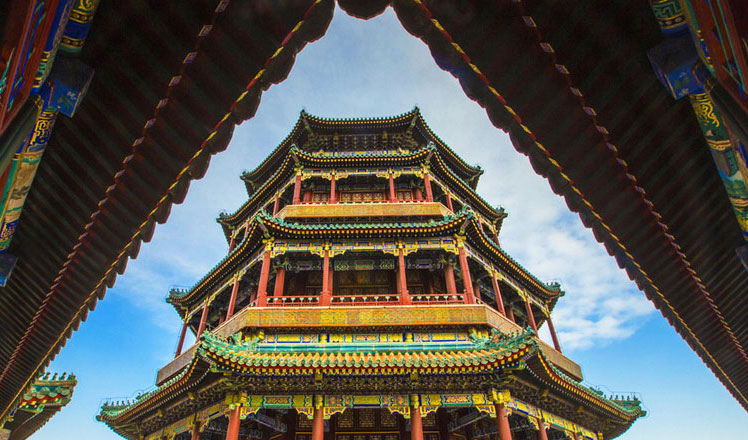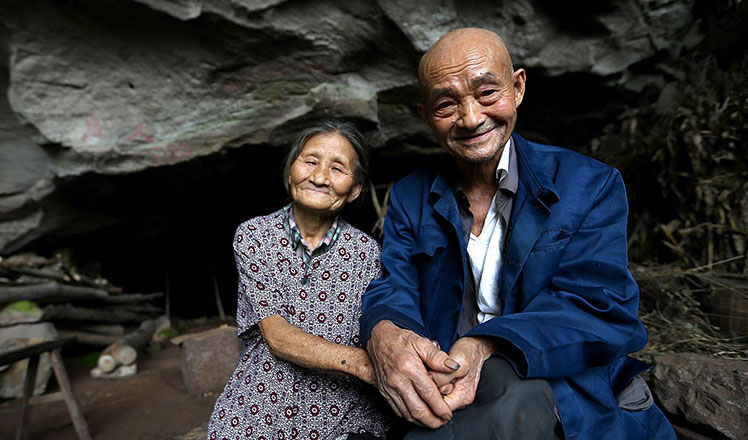S Korea jolted by biggest-ever earthquake, tremor felt nationwide
Updated: 2016-09-13 02:46
(Xinhua)
|
||||||||
SEOUL -- A 5.8-magnitude earthquake jolted southeastern South Korea on Monday, the biggest-ever quake striking the country, injuring at least two people and making people feel the tremor nationwide, Seoul's weather agency said.
The biggest tremor came less than an hour after a 5.1-magnitude earthquake struck on the outskirts of Gyeongju city in North Gyeongsang province at about 7:44 p.m. local time (1044 GMT).
The epicenter of the first quake, which recorded the country's fifth-biggest seismic intensity, was some 9 km southwest of Gyeongju city, an official at the Korea Meteorological Administration (KMA) said in a televised press briefing.
The second tremor with the highest-ever magnitude of 5.8 occurred at 8:32 p.m. at a nearby location, just 1.4 km away from the first epicenter.
Concerns emerge here that South Korea is no longer a safety zone from seismic activity as earthquakes of 5.0 magnitudes or higher have happened three times in 2016 alone.
A 5.0-magnitude quake struck in waters some 52 km east of the country's southeastern city of Ulsan on July 5. The North Gyeongsang province has been hit by quakes 62 times in the past 10 years, including Monday's two tremors.
At least 22 aftershocks with two to four magnitudes followed the big quakes. The weather agency sees no possibility for tsunami and little chance for bigger quakes.
Two people were injured in Gyeongju city, but no more injuries have been reported yet.
According to TV footage, cracks were seen in roads and in the walls of buildings and apartments. One house saw its roof collapsed, with bottles and items broken and strewn across the floor after falling from shelves at a discount outlet.
The big quakes were felt nationwide from the epicenter's adjacent cities of Ulsan and Busan to as far north as capital Seoul and far south as the southern resort island of Jeju.
A combined cycle power plant, fired by liquefied natural gas (LNG), in Ulsan city halted operation after the strong earthquakes hit the southeastern region.
Nuclear power plants, the majority of which are located in southeast South Korea, are being normally operated despite the big quakes.
- Joint ASEAN humanitarian drill 'improves mutual trust'
- DPRK's nuclear test condemned for cranking up tensions
- The world in photos: Sept 4 - 11
- Woman in iconic V-J Day kiss photo dies at 92
- Three women planning 'imminent' attacks arrested in France: minister
- China, Britain vow to deepen military exchanges, mutual trust

 US marks 15th anniversary of 9/11 attacks
US marks 15th anniversary of 9/11 attacks
 Beautiful, smart robots shine at expo in Nanjing
Beautiful, smart robots shine at expo in Nanjing
 In pics: Top 10 most global cities in 2016
In pics: Top 10 most global cities in 2016
 In pics: Couple living in a cave for 54 years
In pics: Couple living in a cave for 54 years
 Back basket: New money-making tool in scenic spot
Back basket: New money-making tool in scenic spot
 Legless man and boy climb a mountain together
Legless man and boy climb a mountain together
 15th anniversary of 9/11 attacks marked
15th anniversary of 9/11 attacks marked
 Yao Ming and Class of 2016 receive Hall of Fame jackets
Yao Ming and Class of 2016 receive Hall of Fame jackets
Most Viewed
Editor's Picks

|

|

|

|

|

|
Today's Top News
Trump outlines anti-terror plan, proposing extreme vetting for immigrants
Phelps puts spotlight on cupping
US launches airstrikes against IS targets in Libya's Sirte
Ministry slams US-Korean THAAD deployment
Two police officers shot at protest in Dallas
Abe's blame game reveals his policies failing to get results
Ending wildlife trafficking must be policy priority in Asia
Effects of supply-side reform take time to be seen
US Weekly

|

|








